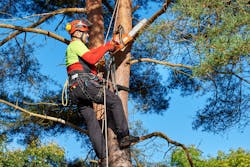TCIA and ISA Release Joint Statement on Essential Tree Care Services
In response to the spread of COVID-19 and the corresponding increase in quarantine measures that are being enacted on a state and local basis, the Tree Care Industry Association (TCIA) and the International Society of Arboriculture (ISA) issued guidance to their members to assist them in determining which types of tree care work should be considered “essential.” TCIA and ISA also encourage governments at all levels to provide clear directives that ensure tree care companies and arborists can continue to provide vital services in this time of national emergency.
“As the COVID-19 situation develops, TCIA is making a concerted effort to ensure tree care companies can continue to provide essential services to communities across the country, including work that ensures our roads and powerlines are clear so that health care providers, food suppliers, and others can continue to provide essential services for addressing the COVID-19 outbreak,” said David White, president and CEO of TCIA in Manchester, New Hampshire.
“Our goal is to equip arborists with knowledge they need to safely and responsibly navigate the dangers of the COVID-19 crisis while they continue to rapidly respond to the ongoing hazards that downed and damaged trees and invasive species pose to individuals, homes, businesses, and critical services,” said Caitlyn Pollihan, Executive Director of ISA in Atlanta, GA.
“Based on input from TCIA and ISA members, we have determined three broad areas of the tree care industry as essential during this national emergency,” said Pollihan and White in a joint statement, “Those are the protection of infrastructure, maintaining the public safety of our communities, and protection against the spread of invasive and/or injurious pests.”
The joint guidance recommends that each tree care company review its existing scheduled and planned work backlogs to identify specific work activities that are directly related to a client or public safety generally as those should be deemed as essential business activity. Furthermore, the guidance provides a non-exhaustive list of work items, provided by members from both associations, such as utility line clearance, hazardous tree removal, and removal of fire damage or fuel trees in a fire hazard area that members have identified as “essential activities.”
The joint statement is available on TCIA's Resource Center, but here are some key points:
- TCIA and the ISA have distilled essential tree care services into three categories including the protection of infrastructure, maintaining the public safety of communities and protecting against the spread of invasive or injurious pests.
- Members from both associations identified critical tree care activities, which include hazard tree removal or the removal of a dangerous tree, pruning of dead, dangerous or hazardous limbs and utility line clearance, etc.
- In addition, the members identified non-essential activities such as the trimming or removal of shrubs and trees, fertilization, installation of irrigation, etc.
For more information and to read the entire statement, visit the Resource Center.
